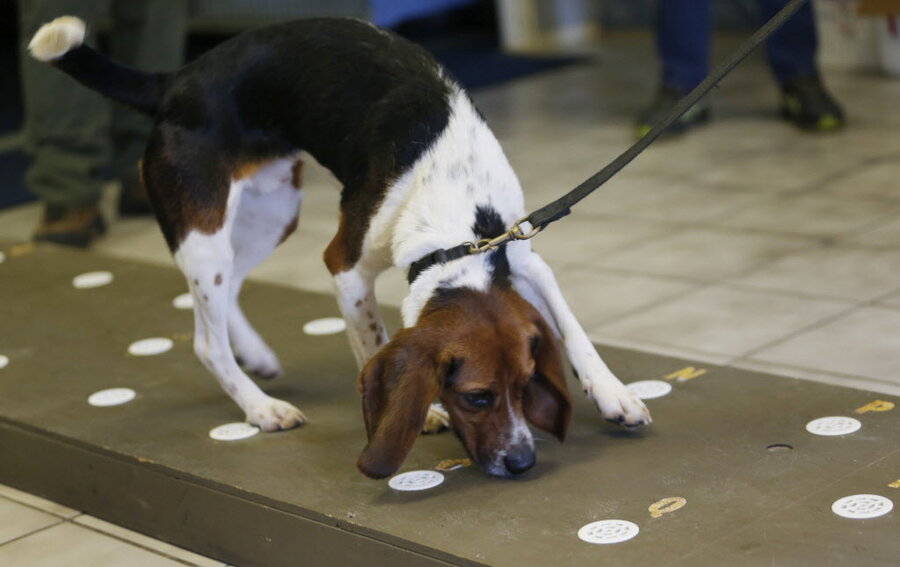Is she or isn't she? Beagle sniffs out polar bear pregnancies.
Loading...
It’s hard to put a dog off the scent – even if that scent is of the feces of a pregnant, or maybe not pregnant, polar bear.
A dog trained to detect polar bear pregnancies, long a difficult task for conservationists hoping to breed the threatened species, has sniffed fecal samples from female polar bears in zoos all around the US to determine if the big bears are pregnant. The coordinator of the program, The Cincinnati Zoo, is expected to release the full results of the sniffing soon, just ahead of polar bear birthing season, which lasts from mid-November to mid-December.
Dogs, of course, can be trained to sniff out lots of things. Labradors sniff out bombs. Puggles sniff out bed bugs. Golden retrievers sniff out elevated sugar levels in those diagnosed with diabetes. Hounds, and sometimes beagles, too, sniff out foxes.
It’s also been said for years – more anecdotal folklore than scientific fact – that untrained pet dogs can tell if their owner is pregnant. Cincinnati Zoo officials thought there might be something to that. So, last winter, the zoo reached out to Kansas-based dog trainer Matt Skogen, of Ironheart High Performance Working Dogs, with a proposal: what if dogs could be trained to tell if a polar bear was pregnant?
Polar bear pregnancies present all kinds of difficulties for zoos. In the wild, female polar bears give birth every one to three years to either one or two cubs. But captive polar bears breed much less often. Miscarriage rates are high. It’s also all the harder to breed the bears since it’s difficult to tell if a polar pear is, in fact, pregnant. Female polar bears might appear pregnant for months, putting on lots and lots of weight, and then, at the end of the eight-month gestation period, turn out to not be pregnant.
So if a dog could be trained to confirm that a polar bear is, in fact, expecting, conservationists could marshal their efforts to ensure that everything goes well, the Cincinnati Zoo says. Pregnant polar bears prefer to bed down in a den. They require solitude. They don’t want food. Zoo workers can recreate all these conditions, if given good advance notice. Plus, early pregnancy detection might also help conservations work backwards and put together the magic formula for successful polar bear breeding, the zoo says.
Enter a single dog. The trained dog is a two-year-old beagle. His name is Elvis. And he is 97 percent accurate in detecting if a polar bear is pregnant or not.
Not that Elvis has ever met a polar bear. Instead, Elvis is provided with fecal samples from the “is she or isn’t she” bear. He then sniffs them for five proteins, out of more than 2,000, that suggest that the polar bear is pregnant. His success rate is based on tests in which he sniffed 200 samples from bears who had already given, or not given, birth.
So far, Elvis has assessed 37 fecal samples from 17 female polar bears at 14 zoos. There’s Kobe, a Pittsburgh Zoo female polar bear who is alleged to have mated with male polar bear, Koda, throughout the spring and summer. There’s Kansas City Zoo’s female polar bear, Berlin, who was reported to have mated with male bear, Nikita, earlier this year.
Not all the results have been released yet, but this year’s crop of new polar bear cubs is expected to be similar to last year’s crop, the Associated Press reported. Three new polar bears were born in 2012, the Associated Press said.
Polar bears, one of climate change’s most visible victims, were listed as a threatened species in the US, under the 2008 Endangered Species Act.






